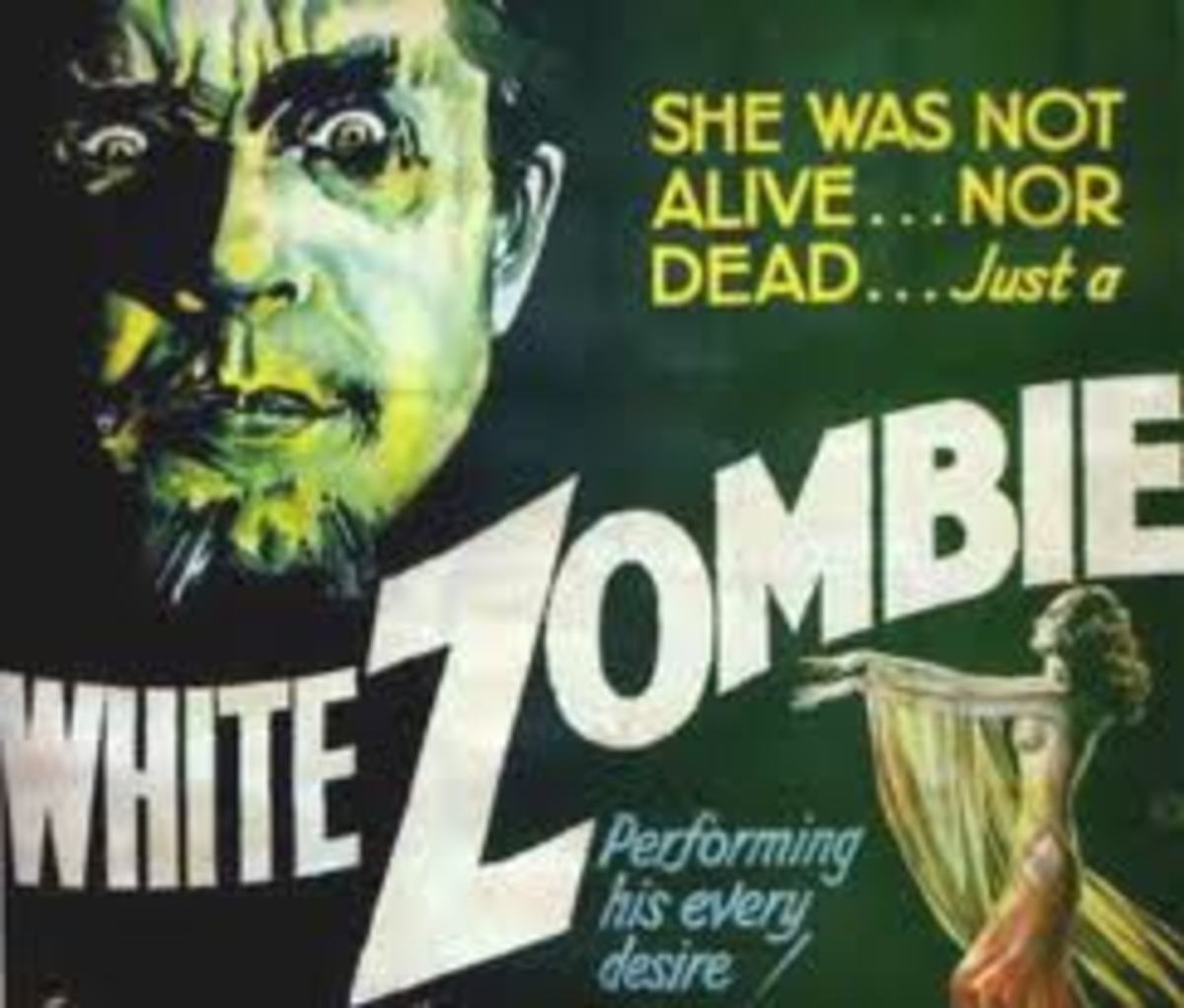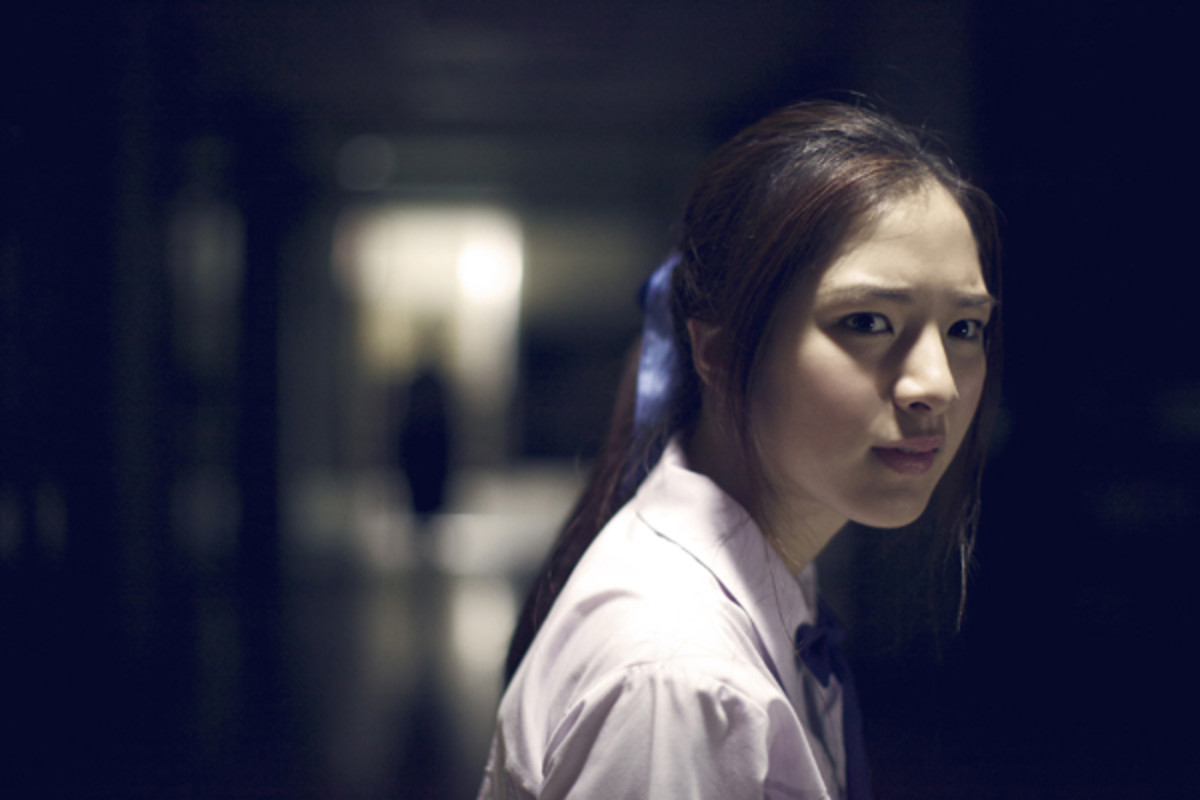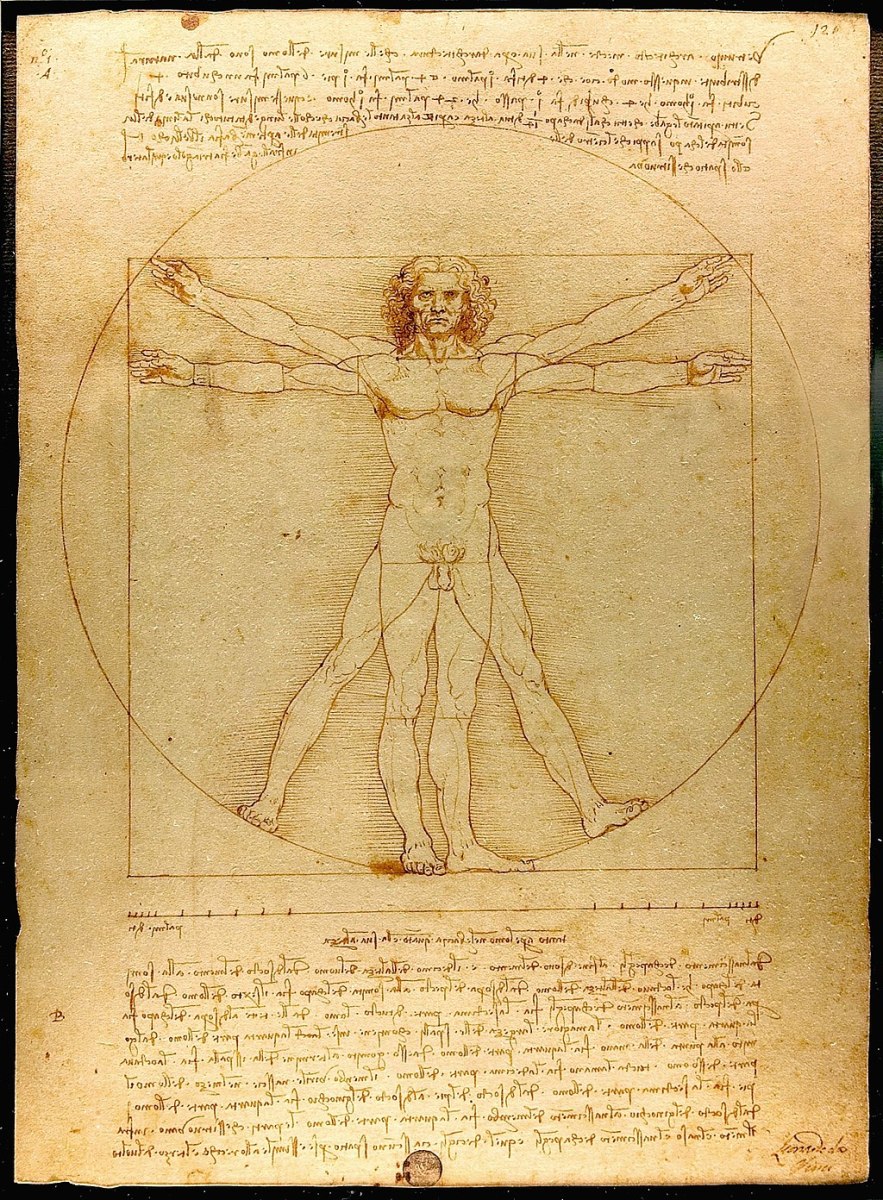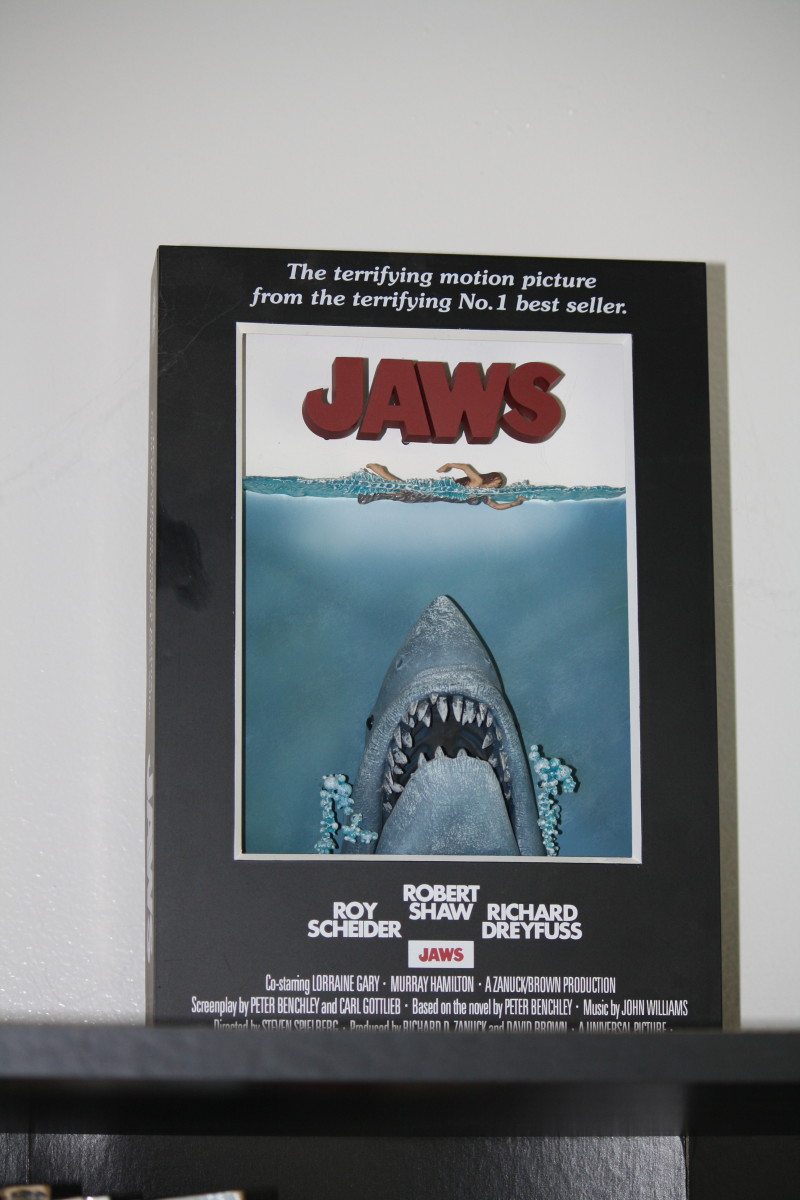Music in Horror Films (featuring "The Omen")
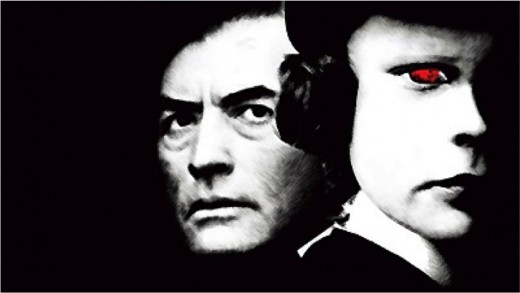
Music Analysis of "The Omen"
Music in horror films usually has many notable characteristics. Usually the music is non-diegetic, empathetic, uses leitmotivs or ostinatos, and often portrays the sounds of a presence that the audience cannot hear (spectre). The music often works as a translator to the audience as to what is going on that we cannot see. Whenever there is a presence that we cannot see, or an emotion that cannot be heard, a films composer will often bring it out in the music. “The Omen” (1976, directed by Richard Donner and composed by Jerry Goldsmith) is a great film to look at because it contains so many examples of the elements listed above and more. Another idea to keep in mind is that a good composer will incorporate the themes of the story into the music, so before we talk about the actual music for “The Omen” let us first talk about the story.
Robert Thorn (played by Gregory Peck) is an American Diplomat who secretly adopts a baby boy named Damien, in order to prevent his wife Katherine (played by Lee Remick) from learning that the baby she gave birth to had been stillborn. At first, everything is normal until Damien turns 5 years old. Strange and un-godly events begin occurring, mysterious people keep appearing and disappearing, and they are all connected under the belief that Damien is the anti-Christ destined to bring forth the end of the world. Thorn starts losing his mind over the possibility that the boy whom he had adopted might have to be killed by his own hands.
There are a couple of ideas a composer to look at as inspiration for the music. The biggest idea is religion, and composer Jerry Goldsmith does this very well by using Gregorian Chants to establish an unsettling mood, and he even adds Church bells for the audience to associate Christianity. Another idea is that Damien, who is supposed to be the anti-Christ, is a child. So how does Goldsmith incorporate this in the music? With a lullaby that is played on a piano in an eerie seven note ostinato that plays throughout the film.
Both of these two elements that I listed above can be hear in the film’s opening score “Ave Satani”. The lyrics are recited in Latin and read:
“We drink his blood,
We eat his body,
Elevate the body of Satan!
Hail
Hail, Hail Anti-Christ!
Hail Satan!"
Not only does the Latin reading of the lyrics give the religious feel, but the lyrics themselves contain a message that is both religious (making ties with the Catholic belief of transubstantiation in the first two lines) and sinister. Another thing to not is as you listen carefully, the music goes from soft to loud which can be interpreted as hell coming to earth, this is known as “text painting” when a composer uses the music as imagery to express an idea through his/her music.There is a spectre in this opening song, which will be present through out the film as the story progresses.
Next song we hear is called “On This Night”, which continues the lullaby that we heard in the “Ave Satani” song, but instead of sounding sinister, it sounds calm and dramatic. It is empathetic to scene because this is the sound of Robert Thorn’s temptation. As the Priest’s suggestion becomes more and more reasonable the music gets louder and louder until Thorn asks “There are no relative?” At this point the music indicates that Thorn may be fair game to adopting the child. The music goes from under-score to over-score at that moment and then back to underscore when the Priest starts talking again, telling Thorn that the child’s mother died at the same moment as his stillborn child. It then goes back to being over-score again after the Priest says “On this night Mr. Thorn, God has given you a son.” Then the score sounds sinister, hinting at the irony of that statement that was just said. But the music then gets softer as Thorn considers that he can’t leave the child with out a family, and his wife would be very upset if she knew that her real child died in birth. The music then turns happy as we see Robert Thorn carry the baby into the scene to show his wife. The lullaby returns yet again to indicate the decision that Thorn has made.
In horror films, there needs to be moments where everything seems like it’s alright, so then it will seem more dramatic when the horror aspect of the horror film comes into play. That is where “The New Ambassador” comes into play as it establishes that things for the Thorne Family are looking up when Thorne learns that he has been promoted to being the American Ambassador to Great Britain. The music is unlike the rest of the film’s score; because it starts sort of happy gradually get happier as Katherine Thorn realizes that her husband is the new ambassador, so the music was the spectre of her realization and happiness. It goes from being a spectre for the scene to being the over-score as it follows the Thorn’s to there new home.
There is a scene transition that takes place over a montage of stills, while the “Happy Birthday” song is playing to lead up to Damien’s 5th birthday. Then when we finally see Damien’s birthday, it almost seems like the “Happy Birthday” song is actually coming from the scene, making it hybrid-diegetic. During the birthday party Damien is having his picture taken with his nannie, Holly, while Katherine looks at them with mild concern. Then music starts playing, an eerie little jingle that is coming from the little kiddie ride that Holly and Damien are standing next to. Maybe it’s because Katharine is concerned that Holly likes Damien a little too much, but something in the music suggests something is wrong. Later on, Kathrine takes Damien away from Holly and Holly just walks around until she sees a black dog and there is a score (that sounds similar to the electric score of “Forbidden Planet”), which gets gradually louder. It is a specter, that let’s us know that something evil is present, and it might also be telling us that Holly is getting hypnotized or possessed (which is being suggest through the camera moving to an extreme close-up shot of both her and the dog, and by the way that there is a light glittering from the dog’s eyes). Then the music just stops as soon as we see Robert playing with Damien. Then Damien is riding a merry-go-round, when all of a sudden we hear Holly calling off-screen “Damien!” The music of the merry-go-round is playing as Holly calls over to Damien, telling him that she loves him, and that she is about to kill herself for him. When she does kill herself, the music of the merry-go-round is drowned out by the momentary sounds of screaming and panicking but after everyone is quiet the music can be heard again as Holly swings back and forth from her noose. This is a clear use of Anempathetic diegetic music, because the music is cheerful and childish, which isn’t the kind of score you would normally think of, when someone just committed suicide. The scene ends with the Thorn family in a huge embrace, while Damien is looking at something over his mother’s shoulder, while the music suggests to us what Damien is looking at. It’s not really a character tone, because this music doesn’t play every time the dog makes an appearance, but is definitely a specter music that suggests that there is an evil presence that is with the dog, and that Damien acknowledges it.
After an intense meeting with a priest, Father Brennan, who tells Thorn that he was at the hospital on the night Damien was born, the music for “I Was There” begins to play that starts out sounding similar to “On This Night”, because this is reminding us about that night, but it is not a song of temptation as it is a song of realization. Then the music builds to intensify the argument between Thorn and Brennan only to die off as the security guard and secretary enter the room cutting off Brennan’s sentence “HIS MOTHER WAS A-!” After Father Brennan leaves Thorn’s office, and Thorn is left alone, the “On This Night” song returns (but played an octave lower) signifying that Thorn knows is starting remember “that night”. He knows that Father Brennan was telling the truth, and he is nervous about other people who might know about that night. The music is empathetic, just like “On This Night” but we are starting to hear some distortions as if to tell us “this is crazy! That Priest was crazy! Things are starting to get crazy, I’m sure everything will get better later on.”
As Father Brennan is escorted out of the embassy, there is another score that is overlapping the previous one. There is this photographer who randomly asks Father Brennan for a photograph. The music suggest that he knows something that we don’t, with this bouncing oboe notes that sound similar to a clock going “tick-tock-tick tock”, which leads us to a ticking sound coming from a timer we can not see.
Then the scene cuts to the inside of a dark room where the source of the ticking is revealed. The photographer is making a print of the photo he just took of the Priest. The music is the sound of the photographer thinking, trying to test a hypothesis that he is having, and he is giving us a clear hint as to what he knows. As soon as he is satisfied the music lets us know with a percussion beat. The audience might not fully understand what the Photographer does, but later on all will be revealed. I believe the music works a Point-of-Audition (POA), in this case it is internal subjective because we understand the thoughts that are going through the photographer’s head through the music.
Now we are introduced to the mysterious Mrs. Baylock, the new nanny who is very anxious to meet Damien. When she does meet him, we are introduced to a new spectre, suggesting that the kind Mrs. Baylock is not at all what she seems. After she says “I am here to protect the!” the lullaby returns, letting us know that Damien was expecting her arrival.
Next is the famous “Broken Vows”, this is the sound of Damien’s fear of churches. Horror music is known for portraying the different sounds of fear in music (heart beating, shaking, breathing heavily, screaming, etc.) and “Broken Vows” is a prime example of this. The song starts off by using a half-step ostinato (previously used in a film called “Jaws”) we are hearing the sounds of Damien’s heartbeat getting gradually faster. Then we hear a church bell getting gradually louder as we are approaching the church, followed by the pizzicato of the strings to make the sound tension (because when you get nervous, your muscles tighten up and this causes you to shake), and then we hear a shaking sound, as if Damien is trembling with fear. The fear intensifies as we see the church as Damien sees it. As soon as the statue appears, we hear the voices for the first time since the opening credits, creating the idea of the presence of a new spectre, one that dwells within Damien. There is a moment of structured silence for a moment as Robert gets out of the car and is greeted by a friend, and then there is a stinger when Damien has a hissy fit because he is so scared of the church. The sounds of the voices constantly chant, while accompanied by the piano and strings, which eventually die away as we drive away from the church; so we can conclude by saying that music is the POA internal objective of Damien because it from his inner space.
Back at home Thorn turns on a record player, as we settle down from an intense scene. The music acts as diegetic, and empathetic because the scene is a calm down, but it almost acts as score so it could be hybrid-diegetic.
Next we arrive at the zoo, where we are immediately introduced to a safe, and peaceful flute sound, followed by the music from “The New Ambassador”. This is a spectre that is like the presence of a mother figure that is making us feel like “everything’s all right and that nothing bad will happen when I am around”. Then the music then starts to shift gears, as Damien goes to see the giraffes. The sounds of the Chanting voices are heard again as though the giraffes can sense something that we cannot. Then we arrive at the baboons, and then they start getting aggressive, as the “Broken Vows” theme returns. This is POA (internal objective) of the monkeys because it is the same fear that Damien had when we went to the church.
Then we have the return of the “On This Night” theme, where Robert and Katharine are in the bedroom. Katharine is starting to have doubts about Damien being her child, and Robert meanwhile is still feeling guilty knowing that Damien is not their child. This is the leitmotif of what happen that night over five years ago, returning but this time is softer, and not distorted.
Robert meets Father Brennan in a park where Father Brennan tells Robert that Katherine is pregnant and that Damien will do all that he can to kill it. Robert then leaves but before he does he makes it quite clear to Father Brennan that he does not want to see him ever again (which foreshadows Brennan’s death). After Robert is gone, a storm spontaneous erupts right where Brennan is. Lightning then strikes a tree and the score of “The Killer Storm” begins with the sounds of voices shrieking. The strings then play rapidly, while the voices chant the lyrics of “Ave Satani” very violently. This is clearly a spectre of either Satan or a demon of some sort who is trying to kill Brennan, and unfortunately succeeds.
The “On This Night” theme returns yet again, because we have returned to the issue of Katherine’s doubts about Damien. This is a distorted version of the “On This Night” theme because Katherine had revealed to Robert that she is pregnant and wants an abortion. We then hear a stinger when Robert looks at the front page of the newspaper and sees that Father Brennan’s death is on the front page.
After we see the scene where Robert rejects his wife’s abortion (trying to prevent the soothsaying of the crazy dead priest), we are now back at home where Damien is riding his tricycle around in circles as Mrs. Baylock watches him. Meanwhile, Katherine is trying to water her plant by standing on a railing. The song “The Fall” signifying the event of something bad about to happen, with the same spectral voices, and the pizzicato of the string instruments. Then we have no music playing just the squeaking sound of the tricycle as Mrs. Baylock lets Damien ride his tricycle out of his room into the hallway, to knock his mother off the railing.
The last scene we will look at is one where the “On This Night” theme returns yet again to remind Robert that this is his entire fault. Thorn has just been informed about Kathrine’s and that the baby that she was pregnant with had died from the impact. The music score “Don’t Let Him Kill Me!” is the return of the “On This Night” theme, but this time it is even more distorted than before because Thorn has just realized that Damien just might be the anti-Christ. After Katherine says “Don’t let him kill me,” the music gives a distorted sound of an Oboe as if telling us that Robert realizes that he might have to kill Damien.
“The Omen” is a good film to watch when developing knowledge of the music theory for a horror film. It has many elements of spectre, POA, leitmotivs, ostinatos, stingers, and other elements of music that have been influenced by previous horror films, and continue to influence music of the current generation of horror films. It was the first film to use Gregorian chants to create an eerie, haunting feel to the film, which has since been used in later films and has since evolved into many forms. A recent example of the use of Gregorian chants to create an unsettling mood would be the film “Let Me In”, in the scene where the vampire girl, Abby, is sucking the blood of “the Father” and then drops him out of a high window of the hospital (according to IMDb.com). So in conclusion, the theories that we can take from “The Omen” are spectre (for when ever there was a presence of evil that we can not see), Point-of-Audition (mostly internal subjective when ever a character had felt joy or fear in the film), leitmotivs or ostinatos (the major example was the “On This Night” theme to signify whenever an event reminded Robert Thorn of the secret adoption of Damien), stingers (the ones we looked at were at the church when Damien has a fit, and there was a little one when Thorn discovers that Father Brennan was dead, and there is an even bigger one near the end when Robert finds the “666” birthmark on Damien, and when Mrs. Baylock appears out of nowhere and attacks Robert), hybrid diegetic music (a few times such as at Damien’s birthday party, and when Robert and Katherine are getting ready for bed), (an)empathetic music (the movie was mostly empathetic music but the birthday party scene when Holly kills herself while the merry-go-round music is playing is an example of anempithetic music) and throughout the film there was text painting (the opening title sequence where the music goes from soft to loud creating the idea of hell coming to earth is a main example of this).

